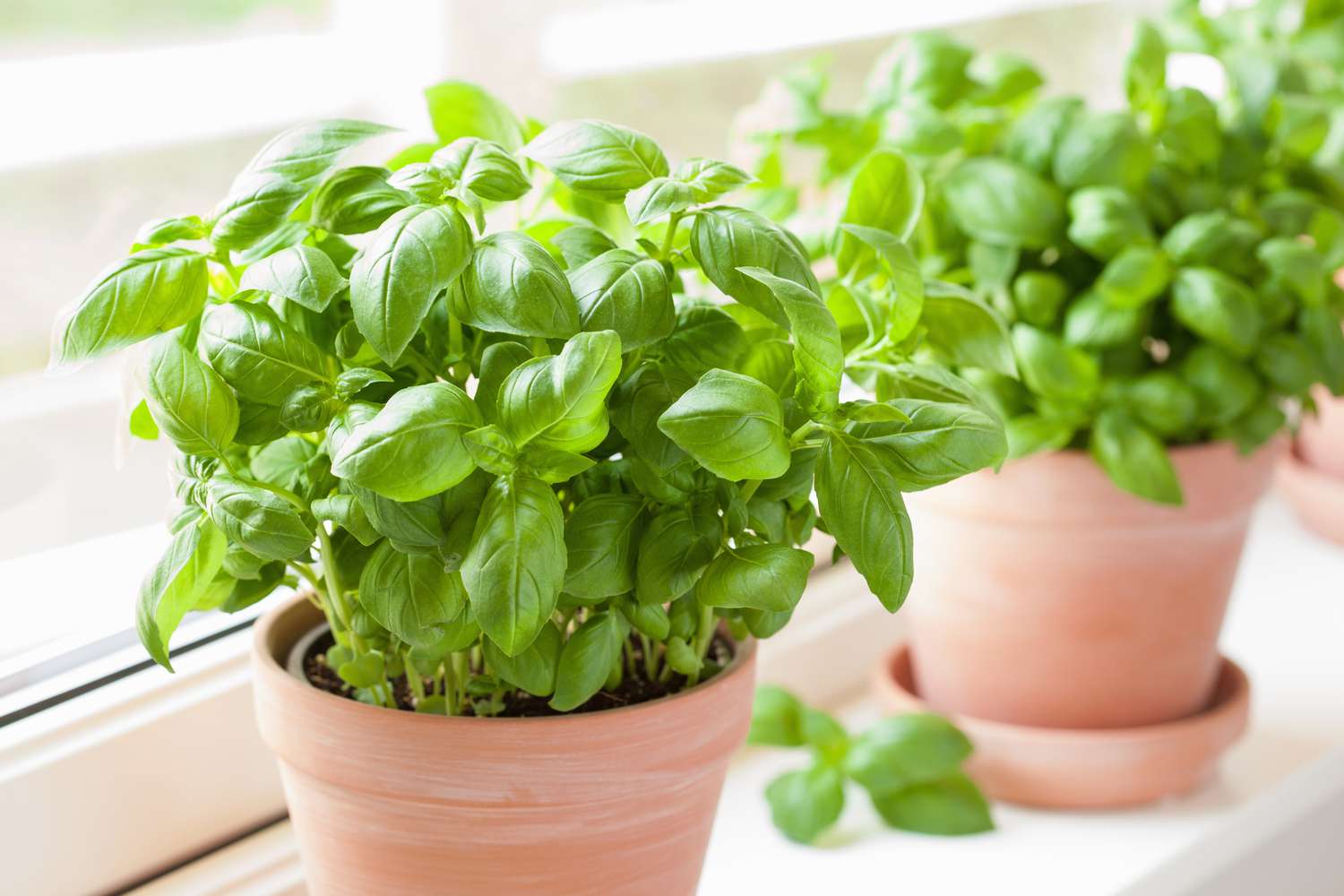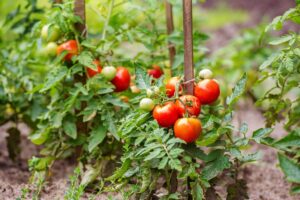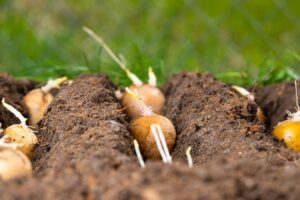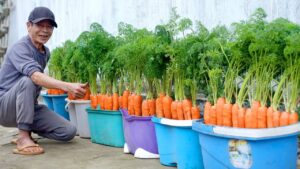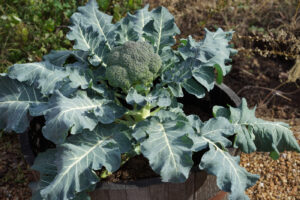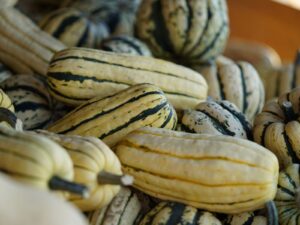How to Plant Basil: A Complete Guide to Growing and Using This Essential Culinary Herb
Basil is one of the most versatile and beloved culinary herbs, bringing a distinctive aroma and flavor to countless dishes. Whether you have a spacious garden plot, a small backyard, or just a sunny windowsill, you can successfully grow this fragrant herb. This guide will walk you through everything you need to know about planting, growing, and using basil in your culinary adventures.
Understanding Basil Basics
Before you get your hands dirty, it’s helpful to understand what basil needs to thrive. Basil (Ocimum basilicum) is a warm-weather annual herb that belongs to the mint family. It originated in tropical regions of Asia and Africa but has become a staple in gardens worldwide, particularly in Mediterranean cuisines.
Popular Basil Varieties for Home Growing
Basil comes in many varieties, each with unique characteristics:
- Sweet Basil (Genovese): The classic Italian variety with large, tender leaves perfect for pesto
- Thai Basil: Features a licorice-like flavor ideal for Asian dishes
- Purple Basil: Adds beautiful color to gardens and has a slightly spicy flavor
- Lemon Basil: Offers bright citrus notes
- Holy Basil (Tulsi): Used in Indian cooking and traditional medicine
When and Where to Plant Basil
Timing and location are crucial factors for successful basil cultivation.
Timing Your Basil Planting
Basil is extremely sensitive to cold temperatures, so timing is everything. According to the USDA Agricultural Research Service, basil should only be planted outdoors when all danger of frost has passed and soil temperatures have reached at least 50°F (10°C). For most regions in the US, this means:
- Northern US: Late May to early June
- Central US: Mid-April to early May
- Southern US: March to April
You can get a head start by planting seeds indoors 6-8 weeks before your region’s last expected frost date.
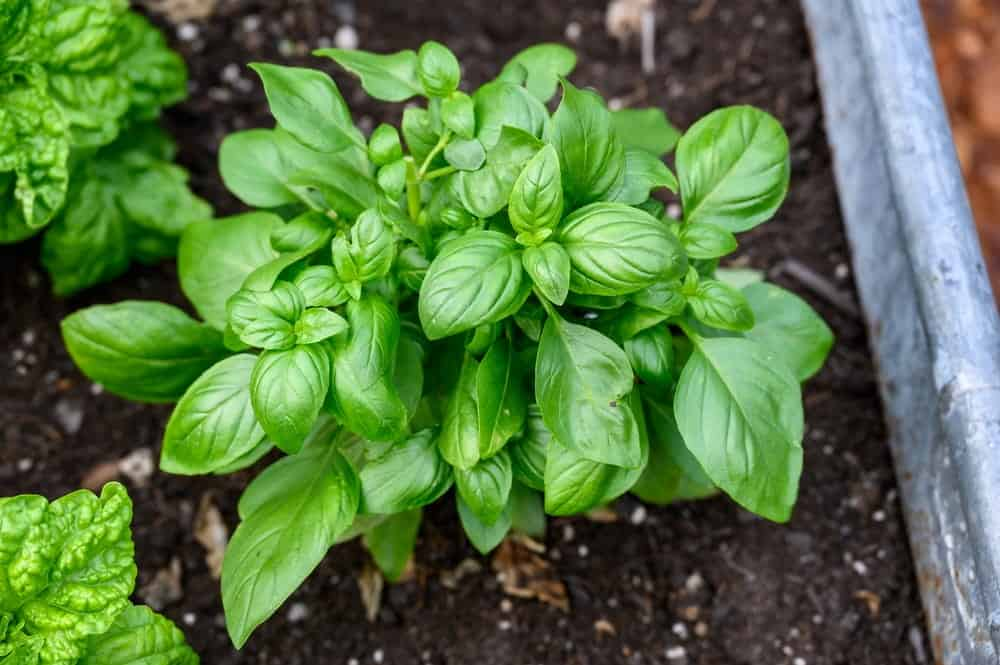
Selecting the Perfect Location
Basil thrives in:
- Full sun: At least 6-8 hours of direct sunlight daily
- Well-draining soil: Waterlogged conditions will quickly kill basil plants
- Protected areas: Shelter from strong winds will prevent damage to the tender stems
How to Plant Basil Seeds Indoors
Starting basil from seeds indoors gives you a longer growing season and stronger plants.
Step-by-Step Indoor Seed Starting
- Gather supplies: Seed-starting mix, small containers with drainage holes, basil seeds
- Fill containers: Add moistened seed-starting mix to containers
- Plant seeds: Sow seeds 1/4 inch deep, placing 3-4 seeds per cell or small pot
- Cover lightly: Sprinkle a thin layer of mix over seeds
- Provide warmth: Place in a warm location (70-80°F is ideal) or use a seed-heating mat
- Keep moist: Maintain consistent moisture using a spray bottle to avoid disturbing seeds
- Provide light: Once sprouted (5-10 days), ensure seedlings receive 14-16 hours of bright light daily
Transplanting Basil Seedlings to Your Garden
When your seedlings have developed 2-3 sets of true leaves and outdoor conditions are suitable, it’s time to move them to their permanent home.
Garden Bed Planting Instructions
- Harden off seedlings: Gradually acclimate plants to outdoor conditions over 7-10 days
- Prepare the soil: Work compost or aged manure into your garden bed
- Dig holes: Space holes 12-18 inches apart for most varieties
- Plant carefully: Place seedlings at the same depth they were growing in their containers
- Water thoroughly: Give a deep initial watering to help establish roots
- Mulch: Apply 1-2 inches of mulch around plants (not touching stems) to retain moisture
Container Planting for Patios and Balconies
- Choose an appropriate container: Select a pot at least 8 inches deep with drainage holes
- Use quality potting mix: Fill container with a well-draining potting soil
- Plant seedlings: Place 1-3 seedlings per 12-inch pot, depending on variety
- Position strategically: Place container where it will receive 6+ hours of sunlight
- Water consistently: Container plants typically need more frequent watering than garden plants
Direct Sowing Basil Seeds in the Garden
If you prefer to skip indoor seed starting, you can sow basil seeds directly in your garden once soil temperatures consistently reach 70°F.
Direct Sowing Method
- Prepare soil: Ensure soil is loose, fertile, and well-draining
- Create furrows: Make shallow depressions about 1/4 inch deep
- Sow seeds: Sprinkle seeds along the furrow, spacing them about 1 inch apart
- Cover lightly: Add a thin layer of soil over seeds
- Water gently: Use a fine spray to avoid washing away seeds
- Thin seedlings: Once plants develop 2-3 sets of true leaves, thin to 12-18 inches apart

Basil Growing Requirements
Understanding basil’s ongoing needs will help you maintain healthy, productive plants throughout the growing season.
Soil, Water, and Fertilizer Requirements
The United States Department of Agriculture (USDA) provides excellent resources on herb cultivation for home gardeners. For more detailed information about growing basil and other herbs in your specific region, you can visit their Cooperative Extension System website: https://www.usda.gov/topics/farming/extension-and-education.
| Requirement | Details | Frequency |
|---|---|---|
| Soil pH | 6.0-7.5 (slightly acidic to neutral) | Test once before planting |
| Watering | 1 inch per week; water at base of plant | Morning watering is best; more often during hot weather |
| Fertilizer | Balanced organic fertilizer (5-5-5) | Light application every 4-6 weeks |
| Temperature | 70-90°F (21-32°C) optimal growth | Monitor during extreme weather |
| Spacing | 12-18 inches between plants | Establish at planting time |
| Sunlight | 6-8 hours of direct sun daily | Choose location accordingly |
| Harvesting | Begin when plant has 6-8 sets of leaves | Regular harvesting encourages growth |
Common Basil Growing Problems and Solutions
Even with careful attention, basil can experience some growing challenges. Here’s how to address them:
Pest Management
- Aphids: Spray plants with a strong stream of water or insecticidal soap
- Japanese beetles: Hand-pick and dispose of beetles; use row covers when beetles are active
- Slugs: Set up beer traps or sprinkle diatomaceous earth around plants
- Flea beetles: Use floating row covers and keep garden clean of debris
Disease Prevention
- Fusarium wilt: Choose resistant varieties; avoid planting basil where other mint family plants grew recently
- Downy mildew: Ensure good air circulation; water at the base of plants; remove affected leaves immediately
- Bacterial leaf spot: Avoid overhead watering; rotate planting locations annually
Harvesting and Using Your Basil
Proper harvesting techniques not only provide you with fresh herbs but also encourage bushier, more productive plants.
Harvesting Tips for Maximum Yield
- Start harvesting when plants reach 6-8 inches tall and have several sets of leaves
- Harvest in the morning after dew has dried but before the heat of the day
- Cut stems just above a leaf node (where leaves attach to the stem)
- Pinch off flower buds as they appear to extend the harvest season
- Take no more than 1/3 of the plant at one time to allow for recovery
Preserving Your Basil Harvest
When your plants are producing more than you can use fresh:
- Freezing: Process leaves with a small amount of olive oil in a food processor and freeze in ice cube trays
- Drying: Hang small bunches upside down in a warm, dry, well-ventilated area
- Infusing: Create flavored oils and vinegars
- Pesto: Make large batches of pesto and freeze in small portions
The US Market for Fresh Basil
The market for fresh culinary herbs, especially basil, has expanded significantly in the United States over the past decade. According to industry reports, the US herb market is valued at over $3 billion annually, with basil being one of the top-selling herbs.
Growing Basil as a Market Crop
If you’re interested in growing basil beyond personal use:
- Farmers markets: Local fresh basil commands premium prices of $2-4 per bunch
- Restaurant supply: Many chefs prefer locally-grown, fresh herbs
- Value-added products: Pesto, dried herbs, and infused oils can expand your product line
- CSA additions: Fresh herbs make attractive additions to Community Supported Agriculture shares
Year-Round Indoor Basil Growing
Don’t let the growing season end with summer! You can continue enjoying fresh basil year-round by growing it indoors.
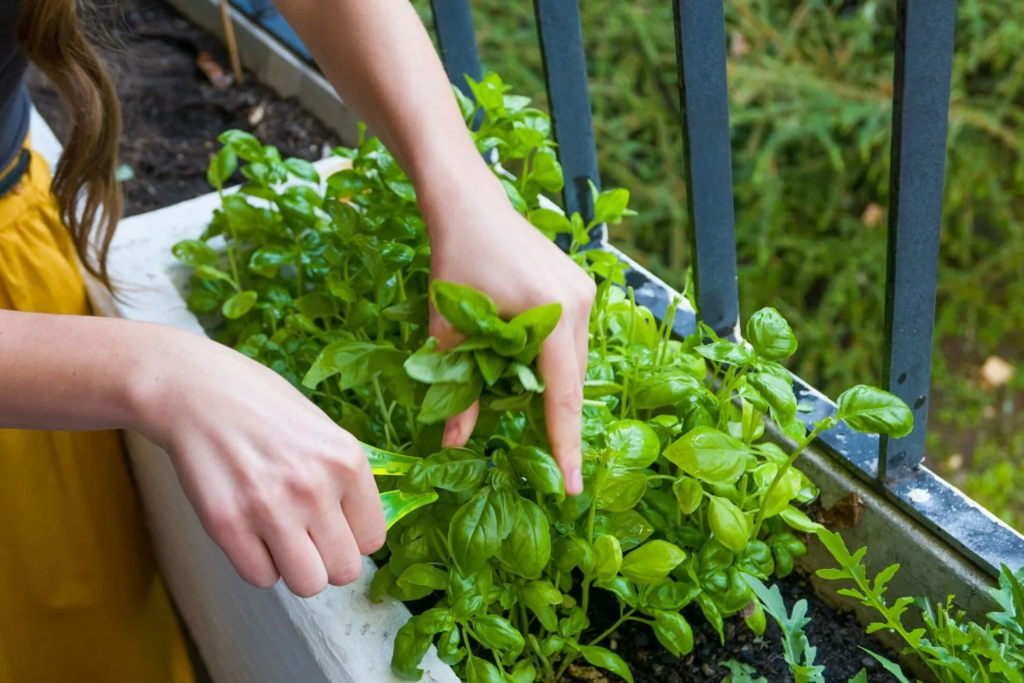
Indoor Growing Methods
- Windowsill gardens: Place pots in a south or west-facing window
- Grow lights: Use full-spectrum LED lights for 14-16 hours daily
- Hydroponics: Simple water-based systems work well for basil
- AeroGardens: All-in-one systems simplify indoor herb growing
Tips for Indoor Success
- Rotate plants regularly to ensure even growth
- Watch humidity levels: Indoor winter air can be very dry; consider a humidity tray
- Maintain air circulation: A small fan can help prevent fungal issues
- Choose compact varieties: “Spicy Globe” and “Greek Dwarf” are ideal for indoor growing
Basil Companions and Garden Planning
Basil grows well with certain plants and can help repel pests from others.
Beneficial Companions for Basil
- Tomatoes: Classic companions that enhance each other’s flavor and growth
- Peppers: Basil can help repel aphids and spider mites
- Marigolds: Help deter pests that might attack basil
- Oregano and parsley: These Mediterranean herbs share similar growing requirements
Plants to Avoid Near Basil
- Rue: Can inhibit basil’s growth
- Sage: Competes for resources and can stunt basil’s development
Conclusion: Enjoying Your Basil Bounty
Growing basil is a rewarding experience that connects you with the age-old tradition of herb cultivation while enhancing your culinary creativity. By following the guidelines in this article, you’ll be well on your way to growing abundant basil harvests that will transform your cooking and perhaps even open up market opportunities.
Whether you’re a novice gardener with just a sunny windowsill or an experienced grower with acres of land, basil’s versatility and relatively simple growing requirements make it an excellent choice for herb gardening. Start with just a few plants, and you’ll quickly discover why this aromatic herb has been cherished by cooks and gardeners for centuries.
Remember that regular harvesting is the key to abundant production, so don’t be shy about snipping those fragrant leaves frequently for your kitchen creations. Your taste buds will thank you for the effort!
